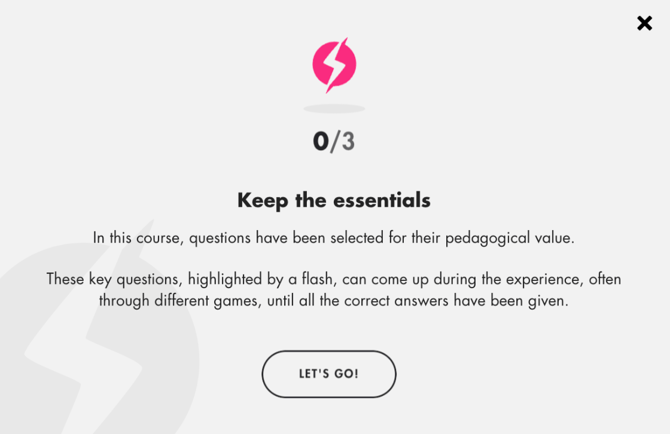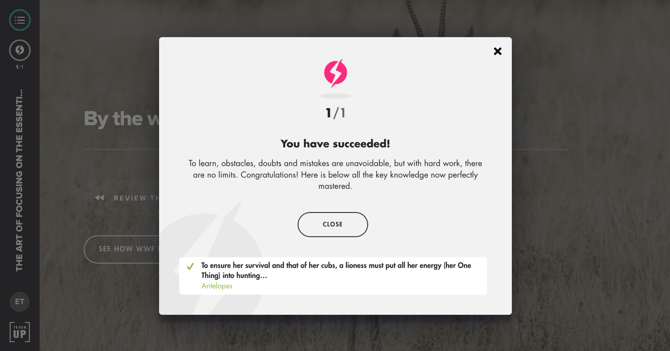Hyper-memorization in a knowledge question
Hyper-memorization is an advanced feature that ensures participants reach a mastery level on the essential knowledge you want to convey in a course. With this option, the author can be sure that a participant can only complete a module after correctly answering certain key questions. This ensures a real acquisition of fundamental skills.
Summary
- Hyper-memorization: definition
- How to activate hyper-memorization
- Conditions for using hyper-memorization
- Participant experience
- Frequently asked questions
Hyper-memorization: definition
Hyper-memorization ensures that a selection of knowledge questions, identified as crucial by the designer, must be correctly answered in order to validate a module. Unlike other knowledge questions, those subjected to hyper-memorization are not just asked once: a participant must answer them correctly before being able to complete the training.
If a participant answers one of these questions incorrectly, it will be re-asked during a reinforcement phase until the correct answer is given. This reinforcement phase occurs:
- after the last sub-section containing a knowledge question, or
- at the end of the module if no specific sub-section is present.
This ensures that the designer knows a participant who has completed the module has mastered the topics related to the hyper-memorization questions.
How to activate hyper-memorization
To activate hyper-memorization on a knowledge question, follow these steps:
- Open one of your knowledge questions.
- Go to the "More options" tab.
- Scroll down the advanced options.
- Check the "Key Question: Hyper-memorization
" option.

Click on the image to open it in a new tab
Once the option is activated, the hyper-memorization icon will appear on the knowledge question.
Recommendations
To use hyper-memorization effectively, it's important to strike the right balance between knowledge reinforcement and user experience. Here are some tips:
- Limit hyper-memorization to 5 questions per module to avoid cognitive overload.
- Vary the question formats to make the experience less repetitive in case of repeated mistakes.
Participant experience
Hyper-memorization impacts several aspects of the participants' learning experience:
- A warning message is displayed at the beginning of the module, informing the participant that they must correctly answer certain questions to complete the module.

- A reinforcement phase is triggered at the end of the course or after the relevant sub-section.

- An automatic memo card is created at the end of the course, gathering the questions the participant had to answer as part of hyper-memorization.

Frequently asked questions
What happens if a participant fails a key question multiple times?
The question will be re-asked until they succeed, either after the relevant sub-section or at the end of the training.
